I have a custom annotation view, when I click on any annotation point, I can see the custom view with all information. but what I need is to see name of each industrial parks under each annotation points. now I can see only point but without names
I need to see name under points.
//MARK: MKMapViewDelegate
func mapView(_ mapView: MKMapView, viewFor annotation: MKAnnotation) -> MKAnnotationView? {
if annotation is MKUserLocation
{
return nil
}
var annotationView = self.mapView.dequeueReusableAnnotationView(withIdentifier: "Pin")
if annotationView == nil{
annotationView = AnnotationView(annotation: annotation, reuseIdentifier: "Pin")
annotationView?.canShowCallout = false
}else{
annotationView?.annotation = annotation
}
annotationView?.image = UIImage(named: "test3a")
return annotationView
}
func mapView(_ mapView: MKMapView, didSelect view: MKAnnotationView)
{
// 1
if view.annotation is MKUserLocation
{
// Don't proceed with custom callout
return
}
// 2
let starbucksAnnotation = view.annotation as! StarbucksAnnotation
let views = Bundle.main.loadNibNamed("CustomCalloutView", owner: nil, options: nil)
let calloutView = views?[0] as! CustomCalloutView
calloutView.starbucksName.text = starbucksAnnotation.name
calloutView.starbucksAddress.text = starbucksAnnotation.address
calloutView.starbucksPhone.text = starbucksAnnotation.phone
//
let button = UIButton(frame: calloutView.starbucksPhone.frame)
button.addTarget(self, action: #selector(CellViewController.callPhoneNumber(sender:)), for: .touchUpInside)
calloutView.addSubview(button)
calloutView.starbucksImage.image = starbucksAnnotation.image
// 3
calloutView.center = CGPoint(x: view.bounds.size.width / 2, y: -calloutView.bounds.size.height*0.52)
view.addSubview(calloutView)
mapView.setCenter((view.annotation?.coordinate)!, animated: true)
}
func mapView(_ mapView: MKMapView, didDeselect view: MKAnnotationView) {
if view.isKind(of: AnnotationView.self)
{
for subview in view.subviews
{
subview.removeFromSuperview()
}
}
}
